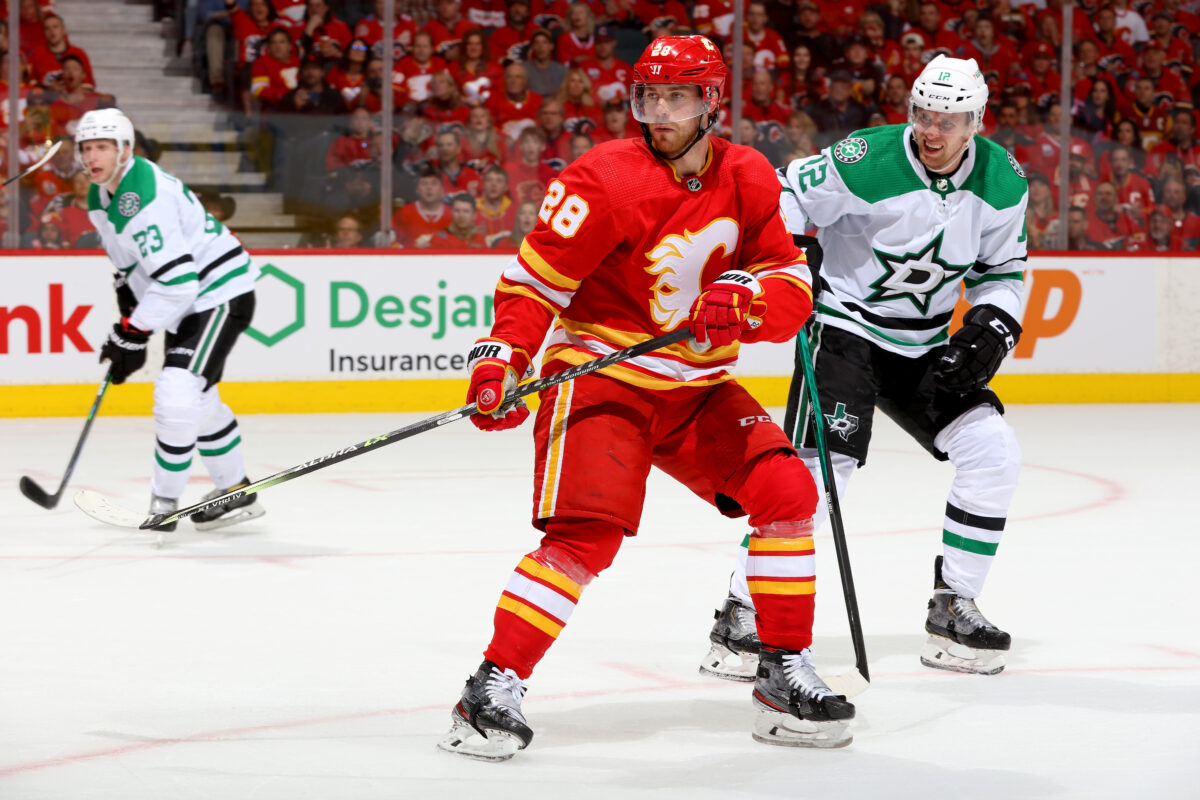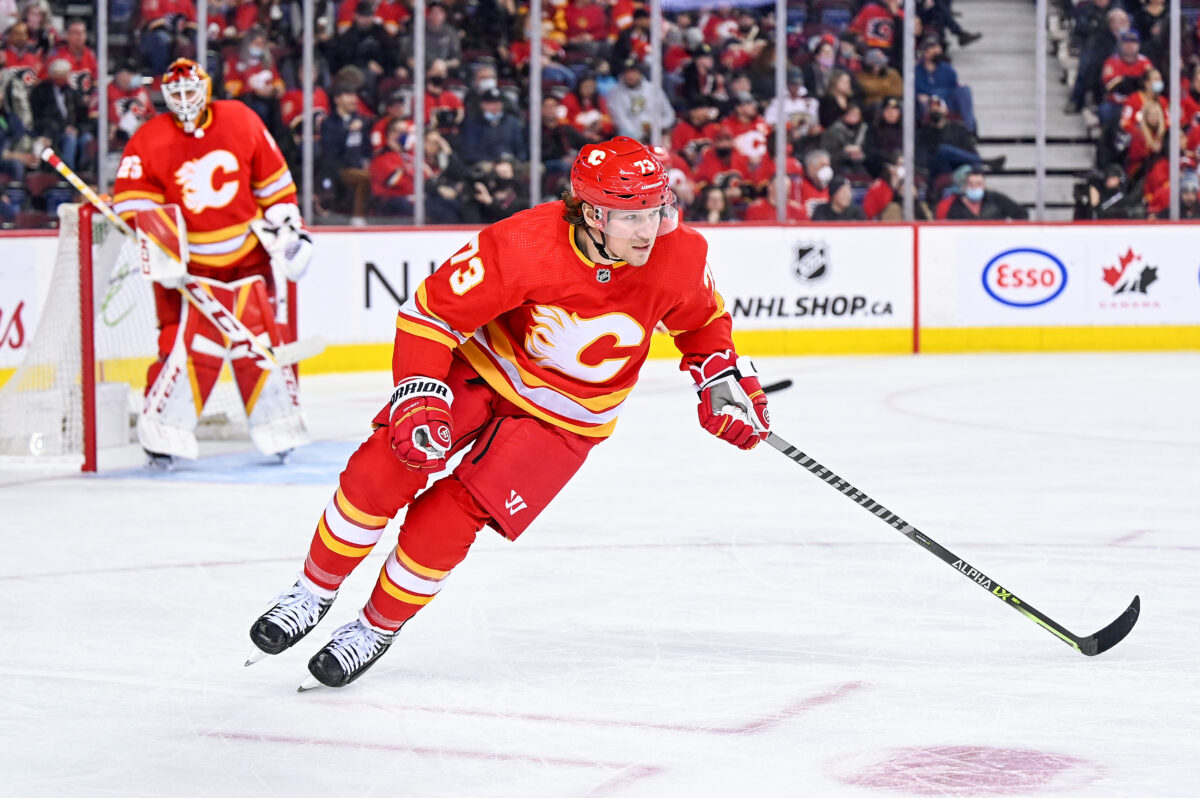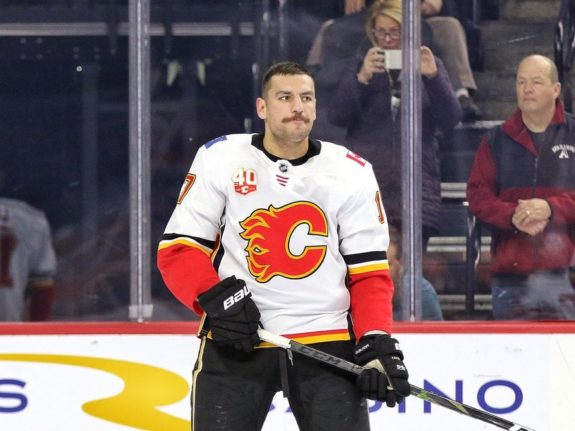There are a lot of similarities between the 1990-91 Calgary Flames and the team’s current iteration, chiefly, that they both have had to come up against the provincial rival Edmonton Oilers in the playoffs. It remains to be seen if the Flames will have a better fate this year than they did 30 years prior, but in the spirit of one of hockey’s greatest rivalries currently going back and forth once again, it seems fitting to take a look back at a past era, and compare some of the players from that original Battle of Alberta squad to the players who are currently filling their skates.
Elias Lindholm and Joel Otto
On the surface when looking at numbers, it might seem dismissive to compare a 40-goal scorer like Elias Lindholm to someone like Joel Otto, whose career-high in points was just 53. While on the offensive end there is a bit of a gap in production, the two’s similarities defensively are definitely there.
Otto was known in his era as one of the best defensive centres in the NHL, tasked with handling the other team’s best players night in and night out. As a result, he often found himself being too preoccupied with preventing goals, that he didn’t have the energy to score any. It was a different time where there were more defined roles for every player in the lineup, and the “shutdown” centre was a key piece in any successful playoff team.

Lindholm represents the evolution of this concept. In a modern NHL where a team’s more talented offensive players increasingly take on more defensive responsibility, he is a prototypical two-way player that has blossomed into a true number one centre. He plays on a line that fully maximizes his offensive capabilities, but as proven by his Selke Trophy nomination, he is more than capable of excelling in a more defensive role. While he is more talented and got more opportunities to stand out offensively, Lindholm’s defensive play is the foundation his game is based on, just like Otto’s was before him.
Tyler Toffoli and Sergei Makarov
The reason that Tyler Toffoli was brought in at the trade deadline earlier in the season was simple: to provide scoring depth behind a dominant trio of star forwards. Sergei Makarov was brought in prior to the 1989-90 season for a similar reason. The Hall of Famer came over to Calgary from the USSR at 31 years old to try and be that one complimentary scoring threat behind Theo Fleury, Joe Nieuwendyk, and Doug Gilmour. Perhaps his most impressive stat, even more so than his 30 goals, was his sky-high 32% shooting percentage in 1990-91, which meant that over a third of his shots on goal went in. This just speaks to his high IQ in the offensive zone, a hallmark of many players from the first Russian generation to defect and play in North America.

Toffoli doesn’t have the shooting percentage or goal numbers of Makarov, but most of that can be chalked up to the fact that NHL goalies have gotten bigger and better in recent times. But you can see those same opportune offensive instincts with Toffoli, the reason that he is always a target for potential contenders to trade for mid-season is due to his smarts around the net and crafty finishing ability. Both players aren’t necessarily the fastest or more explosive skaters, but their ability to think the game makes them so valuable and able to play well in a lot of different systems. You can see that similar adaptability when looking at how Toffoli performed when he arrived mid-season, and when Makarov signed in North America from the Red Army. Both were able to make an immediate impact due to the fact that their offensive minds can translate well pretty much anywhere.
Milan Lucic and Tim (and Mark) Hunter
I might be cheating my own rules here, but it felt disrespectful to mention one Hunter, and not bring up the other in at least some capacity, even if they are unrelated. Tim and Mark Hunter were two of the toughest to put on a Flames jersey, and Tim, who had a 10-year run in Calgary from 1981 to 1991, holds the franchise record for both penalty minutes in a season, and in a career. In 1990-91 however, both of the Hunters were winding down long NHL careers, and they were used more sparingly throughout the season. Mark played 57 games that year before moving to the Hartford Whalers mid-season, while Tim played just 34. Funnily enough, once Mark was moved partway through the season, Tim started to get more and more game time. After only playing six games from October to January, and was basically a mainstay in the lineup once Mark left a void in the toughness department, even playing all seven playoff games against the Oilers.

It’s clear that coach Darryl Sutter still believes in this philosophy to an extent, as Milan Lucic has played the role of “tough guy” for all 82 games during the regular season, and remained in the playoffs. Like the Hunters, Lucic is entering the twilight of his career and has found a role in the Flames lineup by intimidating and punishing opposing defenders (and sometimes opposing goalies), on the forecheck.
Related: 3 Takeaways from the Flames’ Barnburner Game 1 Victory Over the Oilers
A staple of Flames home games this season has been an opposing defender chasing the puck into their own zone, dreading the impact that they know is coming when they hear the “LUUUCH” chants raining down. All three players consistently made life harder for opponents, and it is no surprise to see that the coaching staff of both teams, despite the difference in eras, deemed it necessary that they needed a player to fill that role during a season where they had aspirations of a Stanley Cup.